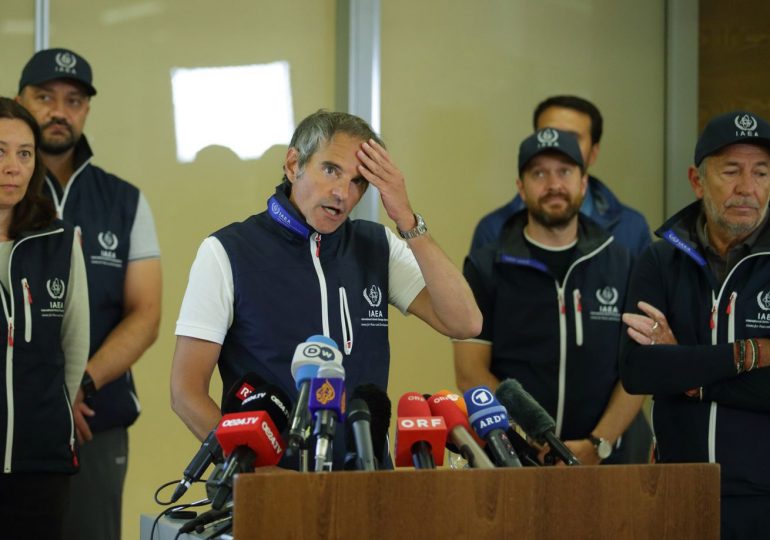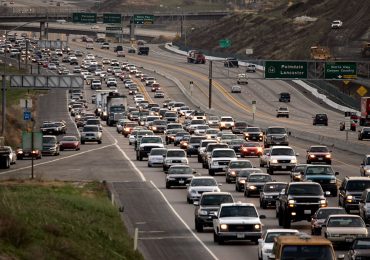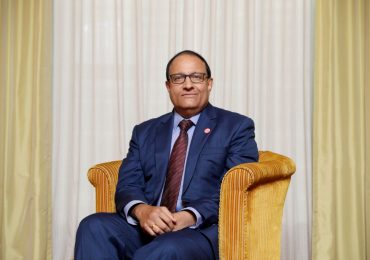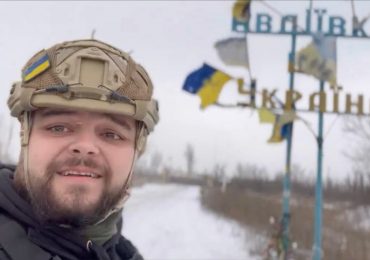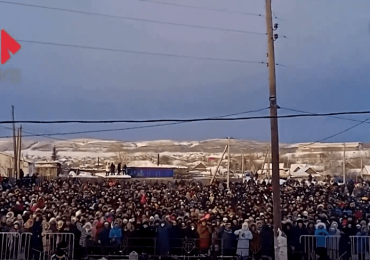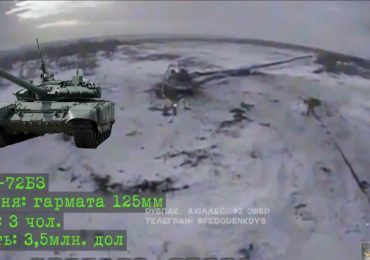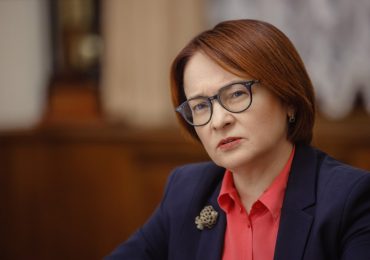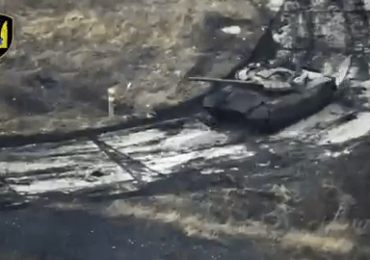
The IAEA observed the damage at Europe’s largest power plant. Now what?
Inspectors from the International Atomic Energy Agency (IAEA) arrived at Ukraine’s Zaporizhzhia nuclear power plant Friday to observe damage to the Russian-controlled facility, as fighting continues around the plant. The IAEA intends to keep two experts at the facility on an extended basis, but the agency’s power to change the conditions at the plant — including reported anxiety and exhaustion on the part of the Ukrainian workers, heavy fighting around the plant, and Russian attempts to connect the plant to its own power grid — is limited.
After his five-hour visit Friday, IAEA Director General Rafael Mariano Grossi briefed reporters back in Vienna at the agency’s headquarters, saying his greatest concern was damage to the building during heavy shelling in August. It’s still unclear who’s responsible for that shelling, as Ukraine and Russia have traded accusations back and forth. However, with the independent IAEA inspectors present, “when there is an allegation that something has happened at the plant, you can turn to us,” Grossi said.
Efforts to get a monitoring team from the IAEA, a UN agency, have been ongoing but were heaviest in August due to the intensifying fighting around the plant. Ukraine has mounted an offensive in recent weeks to reclaim Russian-held territory in the south and southeast. While much of the push is presently focused on the city of Kherson, the Zaporizhzhia plant is still quite close to the front — approximately 60 miles from Kherson itself and on the northern border of Russian-held territory.
Given the potential for catastrophe and lack of independent insight into the situation at the plant, Grossi addressed the UN Security Council on August 11, calling again for a mission to Zaporizhzhia; the agency has for months been asking to go to the facility to provide oversight and technical assistance. Since Russia and Ukraine, as parties to the conflict, have given the agency inconsistent information about the safety and operation of the plant, Grossi stressed the need for an independent fact-finding mission. “It is those facts, gathered during a site visit, that are needed for the IAEA to be able to develop and provide an independent risk assessment of the nuclear safety and security risks,” he said at the time.
The Zaporizhzhia nuclear power plant is Europe’s largest, supplying approximately 20 percent of Ukraine’s electricity before the war and half of its nuclear power, according to the Washington Post. It’s still producing energy, including energy for export to Europe — one of Ukraine’s limited methods of producing revenue in wartime, particularly as the conflict is choking the country’s agriculture exports. However, that makes the reactors vulnerable not only to occupation and attack but also to limited supply lines for spare parts and the potential for Russia to divert power from the plant to its own grid — a delicate process, which risks cutting off the supply of power to cool the reactors.
“Nuclear is a fear factor, and it’s also a power factor,” Cindy Vestergaard, a senior fellow and director with the nuclear safeguards program at the Henry L. Stimson Center, told Vox on Saturday. “With Zaporizhzhia, we’re getting to something Russia holds very dear, and that is its power over energy sources. And so nuclear is at the heart of geopolitics, it’s at the heart of energy policies, and, of course, for the world to keep the lights on.”
What did it take to get the IAEA team to Zaporizhzhia?
As of now, few details about the monitoring mission — and the negotiations enabling it to go forward — are known. The New York Times reported Wednesday that 14 experts left Kyiv to travel to the Zaporizhzhia plant, traveling through military checkpoints and active fighting to reach the facility.
“This is totally unprecedented — we’ve never had an active conflict in a country which also has such a robust nuclear power program. It’s the seventh-largest nuclear power program in the world,” Vestergaard said. “The dance, or the navigation that the agency would have to do is, obviously, between Ukraine and Russia,” she said, and would involve “a lot of details, even down to commas, about how things would be outlined in order for the agency to go.”
One point of negotiations was whether the team would enter and leave the area through Ukrainian- or Russian-held territory. The mission opted to travel to the facility from Kyiv via Ukrainian-held territory, possibly to avoid legitimizing Russia’s occupation of the Zaporizhzhia plant. But even something as mundane as the route used to get to the area had consequences for their trip. “[The IAEA mission] will not be provided with a special pass,” Vladimir Rogov, an official with the Russian occupation forces told the Times. “They had a chance to come from Russia through the liberated territory safely, quickly and without obstacles.” Russia has also refused calls to demilitarize the area, putting the plant at continued risk of damage from shelling.
Russia does have a vested interest in allowing the monitoring team to visit, Scott Roecker, vice president of the Nuclear Threat Initiative’s nuclear materials security program, told Vox on Saturday. “I think it was in the Russians’ interest to have IAEA come there for a couple of reasons,” he said. “One, so that it could demonstrate that the reactor was still operating, and the plant was operating. Also, to a certain degree, having an international organization at the site, having inspectors there — it legitimizes, to a certain degree, Russia’s presence there.”
Despite the logistical challenges of the mission and the restrictions Russian officials imposed, Grossi said in a press conference Friday that he had open access to everything he asked to see — a positive introductory step that will hopefully yield critical, independent information about the state of the plant for the agency’s report to its board of governors when that body convenes next week. From there, Roecker said, information and recommendations can reach the diplomatic level and provide valuable insight and context for further negotiation. But, as Vestergaard stressed, this mission is just a start.
“I’m hoping that one report will not be enough,” she said. “It’s going to be a series of on-the-ground, on-site, continuous surveillance and physical presence at the facility going forward.”
How much can the inspectors change at the plant?
The mission’s mandate is concerned with three elements within the Zaporizhzhia facility: the safety of its operations, the security of the facility overall, and the safeguarding of nuclear material produced there. The mission can collect information about these elements and disseminate it, but “these are inspectors, they can’t decide to start operating the plant in a certain way if they feel like it’s not being operated in a safe manner,” Roecker said. “They really aren’t going to get between the people who are managing the site from a Russian perspective and the Ukrainian operators.”
The agency also has no oversight or negotiating power regarding the military activity surrounding the facility. However, it can — and has — recommended that the fighting stop immediately.
Though it’s powerless in a legal and logistical sense, the information that the mission could share is powerful, Roecker said. “We’re getting an unbiased source inside that facility, sharing information, and there will be a lot of pressure […] to make sure that any concerns that they raise are somehow rectified. There’s nothing that they can do themselves, but the mere fact that they’re there — the information that they will provide and the recommendations that they give will get a ton of attention and there will be a lot of pressure to make those changes.”
As of Saturday, the concerned parties have agreed to allow two inspectors to remain in the area, though for how long is thus far unclear. “My biggest flag will be, if they leave, can they ever get back in,” Vestergaard said.
But some Ukrainian officials want a stronger response from the agency. “I hope that the IAEA will ultimately be able to fulfill its functions,” Oleksandr Starukh, the head of the Zaporizhzhia Regional Military Administration, told Ukrinform. “There’s hope that the international organization will draw conclusions, taking into account all the threats, and together we will protect the world from the absolutely real threat posed by Russia. Either we solve the existing issues together or someone else will address them for us.”
In the longer term, as more nations consider nuclear power to mitigate climate change, the agency and the world will have to consider how to deal with the possibility that civilian nuclear power plants could be weaponized. This would require better treaties and agreements around nuclear power generally, and civilian facilities specifically as well as diversifying the nuclear supply chain. With many countries depending on Russian fuel, technology, and spent fuel reprocessing to maintain their nuclear energy production, some European stakeholders are presently looking for ways to move away from dependence on Russia’s nuclear power dominance.
What the IAEA does in Zaporizhzhia will have ripple effects in the future, Vestergaard told Vox. “This is going to set a precedent for how the agency will interact with facilities under its purview in active conflict zones,” she said. “Hopefully, we won’t be in a situation like this again, but as more states acquire nuclear power for civilian purposes, this is something we have to consider going forward. This is a game changer.”

